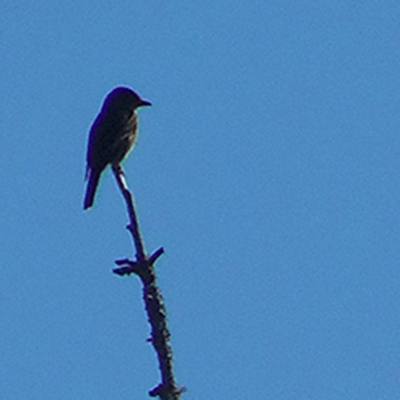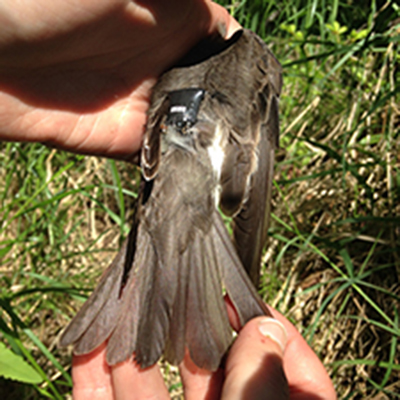Olive-sided Flycatcher Migratory Connectivity Project
Olive-sided Flycatchers (Contopus cooperi) are designated as Near Threatened throughout their range by the International Union for Conservation of Nature (IUCN) Red List of Threatened Species. Currently, these birds face many threats including a decrease in prey availability, habitat loss (e.g. fire suppression or land conversion on their breeding, stop-over, and wintering grounds), pollution (e.g. mercury, pesticides), and climate change-related mismatch of reproduction and maximum prey density.
Project Overview

Recent advances in technology have made geolocation devices significantly smaller, enabling researchers to track songbirds with greater accuracy than ever before. This opens new avenues of study into the connectivity between breeding and non-breeding populations of migratory species. The Smithsonian Institute’s Migratory Connectivity Project has an ongoing, collaborative geolocation project on Olive-sided Flycatchers in order to assess the migratory connectivity of this species’ population and advance the knowledge of the life history of these birds, and BRI is assisting in this effort.
Project Components

In order to better understand the threats faced by Olive-sided Flycatchers, our goal is to determine migratory routes, migratory connectivity, and important stopover locations of these birds through the use of GPS (Global Positioning System) data loggers. Surveys for Olive-sided Flycatchers were conducted in New Hampshire and Maine in 2015. In the summer of 2016, we captured five Olive-sided Flycatchers (four in New Hampshire, one in Maine) and attached GPS data loggers using leg-loop harnesses. These individuals will be targeted for recapture in the 2017 breeding season in order to retrieve the geolocation devices.
This work is being conducted in collaboration with the Smithsonian Institute, as part of their Migratory Connectivity Project.
Photo Credits: All Photographs © BRI-Allison Byrd


